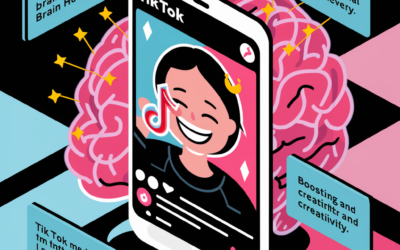Anxiety is a common mental health concern that can be triggered by various factors such as stress, trauma, or even genetics. One way to manage anxiety is by recognizing and addressing cognitive distortions. Cognitive distortions are irrational and negative thought patterns that can intensify anxiety symptoms. In this post, we will discuss 15 cognitive distortions and how to recognize them to reduce anxiety.
-
All-or-Nothing Thinking
All-or-nothing thinking is the tendency to view situations in black and white. It is either all good or all bad, with no middle ground. This type of thinking can lead to feelings of disappointment, frustration, and anxiety. To recognize this cognitive distortion, try to find evidence that contradicts your beliefs. For instance, if you think you are a complete failure at work, ask yourself if there are any instances where you have succeeded.
-
Overgeneralization
Overgeneralization is when you take one negative experience and apply it to all similar situations. For example, if you failed a test, you might think that you are not good at anything. To combat overgeneralization, focus on the specific situation rather than assuming it will happen every time. Use your past experiences as evidence that you have succeeded before and can do it again.
-
Mental Filtering
Mental filtering is the act of dwelling on the negative aspects of a situation while ignoring the positive. It can lead to feelings of hopelessness and despair. To recognize mental filtering, try to find the positive aspects of a situation. Even if the positive aspects seem small, focus on them and try to see the bigger picture.
-
Disqualifying the Positive
Disqualifying the positive is when you ignore or dismiss positive experiences or feedback. You might believe that the positive experience was a fluke or that you do not deserve it. To recognize this cognitive distortion, acknowledge and accept the positive feedback or experience. Recognize that you have worked hard and deserve recognition.
-
Jumping to Conclusions
Jumping to conclusions is when you make assumptions about a situation without having all the facts. You might assume that someone is upset with you without asking them or believe that a situation will end badly without any evidence. To combat this cognitive distortion, gather all the facts before making assumptions. Ask for clarification and seek evidence before jumping to conclusions.
-
Magnification or Minimization
Magnification or minimization is when you exaggerate the importance of negative events or minimize the importance of positive ones. For example, you might magnify a small mistake and believe that it will lead to catastrophic consequences. To recognize this cognitive distortion, try to see the situation objectively. Use logic and reason to evaluate the situation.
-
Emotional Reasoning
Emotional reasoning is when you believe that your emotions reflect reality. For example, if you feel anxious, you might believe that something bad is going to happen. To combat emotional reasoning, recognize that your emotions do not always reflect reality. Try to find evidence to support your thoughts and evaluate them logically.
-
Should Statements
Should statements are when you have a set of rules for yourself and others that are not based on reality. For example, you might believe that you should always be perfect or that others should always treat you fairly. To combat should statements, recognize that these rules are not always realistic or helpful. Focus on what you can control and let go of unrealistic expectations.
-
Labeling and Mislabeling
Labeling and mislabeling are when you attach negative labels to yourself or others based on a single mistake or experience. For example, you might label yourself as a failure because of one setback. To recognize labeling and mislabeling, focus on the behavior rather than the person. Recognize that making mistakes is a part of life, and it does not define who you are as a person. Instead, focus on learning from your mistakes and moving forward.
-
Personalization
Personalization is when you take responsibility for events that are outside of your control. For example, you might blame yourself for a global pandemic or believe that your partner's bad mood is your fault. To combat personalization, recognize that some events are outside of your control, and it is not always about you. Practice self-compassion and be kind to yourself.
-
Catastrophizing
Catastrophizing is when you imagine the worst-case scenario and believe that it will happen. For example, you might believe that if you fail a test, you will never graduate or get a good job. To recognize this cognitive distortion, try to find evidence to support your thoughts. Consider the likelihood of the worst-case scenario happening and focus on taking small steps to prevent it.
-
Mind Reading
Mind reading is when you believe that you know what others are thinking or feeling without evidence. For example, you might believe that your friend is mad at you without asking them or assume that your boss thinks you are incompetent. To combat mind reading, recognize that you cannot always know what others are thinking or feeling. Practice open communication and ask for clarification.
-
Control Fallacies
Control fallacies are when you believe that you have complete control over situations or that you have no control at all. For example, you might believe that you are responsible for someone else's happiness or that there is nothing you can do to improve a situation. To combat control fallacies, recognize that some situations are outside of your control, but you can control your response to them. Focus on what you can do rather than what you cannot.
-
Fallacy of Fairness
The fallacy of fairness is when you believe that everything should be fair and equal, and you become resentful when it is not. For example, you might believe that you should get a promotion because you have worked hard, but someone else got it instead. To combat the fallacy of fairness, recognize that life is not always fair, and there are many factors at play. Practice gratitude and focus on your own journey rather than comparing yourself to others.
-
Blaming
Blaming is when you hold others responsible for your problems or take responsibility for other people's problems. For example, you might blame your partner for your own unhappiness or take responsibility for your friend's bad mood. To combat blaming, recognize that everyone has their own responsibilities, and it is not always about you. Practice empathy and understanding, and communicate openly and honestly.
In the end, recognizing and addressing cognitive distortions can help reduce anxiety symptoms. By practicing self-awareness and challenging negative thought patterns, we can improve our mental health and overall well-being. If you struggle with anxiety, consider seeking professional help from an online therapist or counsellor who can provide additional support and guidance. Also useful is to try a therapy app that is rich in resources such as mindfulness meditations and strategies to rewire anxiety. Headspace has a free trial and have more than enough resources to give you enough mental clarity to overcome some distortions and get better results.























